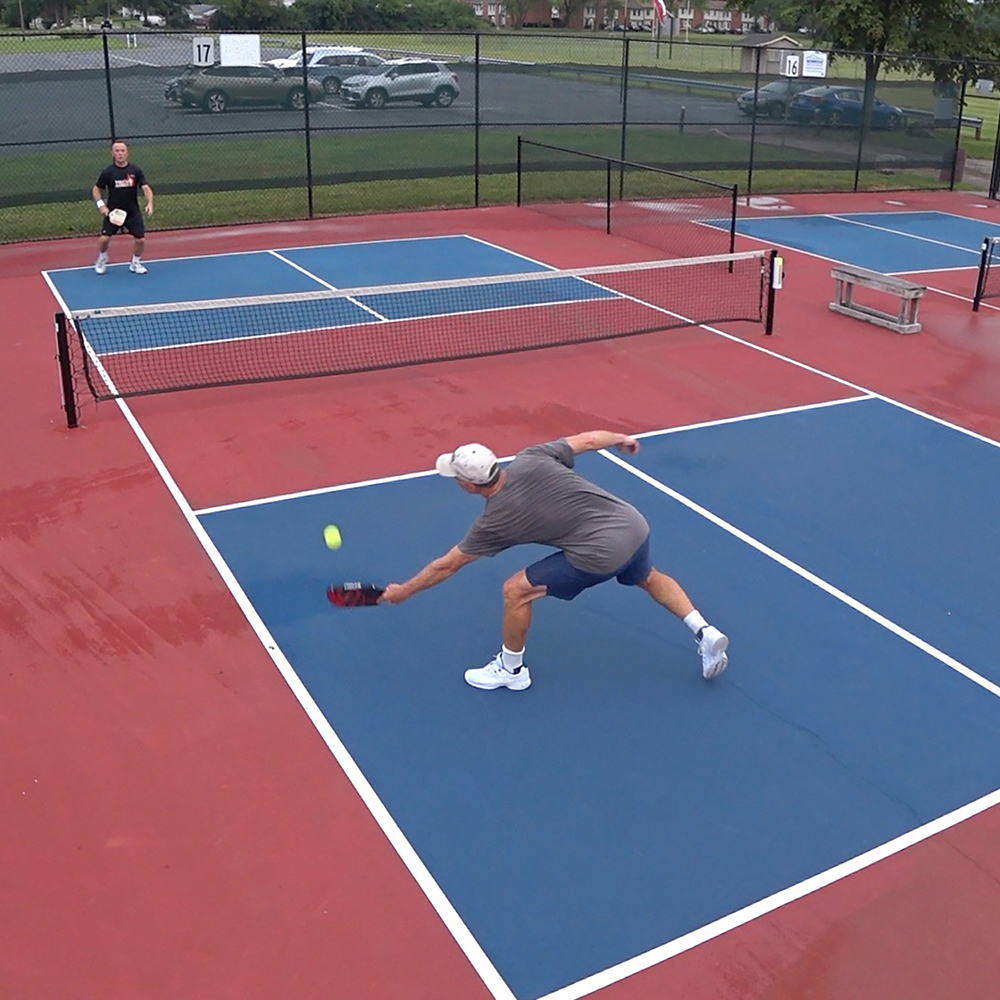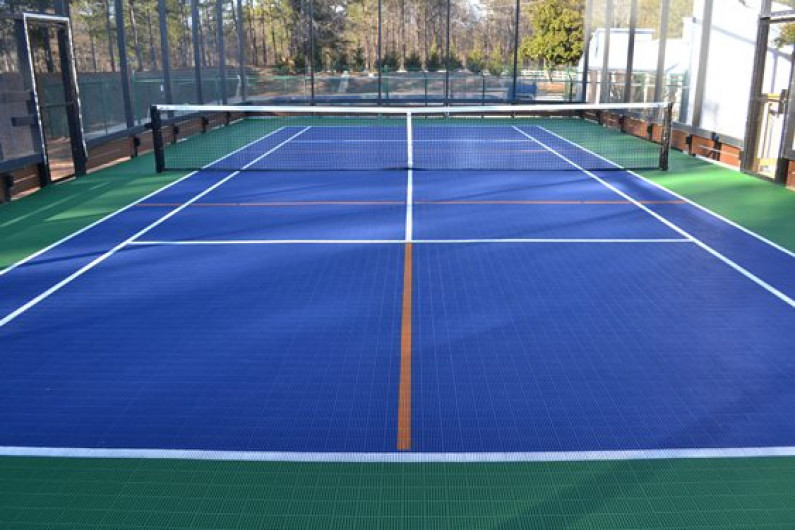How to Select the Right Products for Pickleball Court Construction
How to Select the Right Products for Pickleball Court Construction
Blog Article
Navigating Rules for Pickleball Court Building in Your Area
Creating a pickleball court in your area needs a nuanced understanding of various regional regulations, including zoning regulations, building licenses, and security standards. Engaging with regional authorities and the area is vital for guaranteeing conformity and fostering support.
Recognizing Neighborhood Zoning Laws
When thinking about the construction of a pickleball court, understanding neighborhood zoning laws is vital to guaranteeing compliance and staying clear of potential legal issues. Zoning guidelines determine how land can be used and typically consist of requirements related to recreational facilities. These regulations can vary substantially by town, impacting elements such as court placement, lighting, dimension, and sound degrees.
Before initiating building, it is important to seek advice from the local zoning board or planning division to identify the particular laws that apply to your property. Certain zones might limit leisure activities, while others may require details authorizations or adherence to certain standards. It is likewise essential to think about problems, which determine how much structures have to be from property lines or various other buildings.
Additionally, exclusive advancements, such as house owner associations (HOAs), may enforce their own guidelines regarding the building and construction and use of pickleball courts. Recognizing these guidelines can avoid pricey adjustments or litigation down the line. Involving with local stakeholders and area members can give useful insights and foster assistance for your project, making sure that it aligns with the area's requirements and expectations.
Obtaining Necessary Building Allows
Just how does one navigate the intricacies of acquiring necessary structure authorizations for a pickleball court? Usually, you will require to submit a detailed site strategy that details the recommended court dimensions, products, and design.

Once licenses are gotten, it is vital to comply with any kind of examination schedules and demands throughout the construction stage. Preserving interaction with neighborhood authorities will certainly assist in a smoother authorization process and help prevent possible troubles. By thoroughly preparing and comprehending the allowing landscape, you can effectively browse the intricacies included in building a pickleball court while remaining compliant with all neighborhood laws.

Assessing Environmental Effect
An extensive analysis of ecological impact is essential when preparing the building and construction of a pickleball court. This analysis helps determine potential effects on local ecological communities, water resources, and neighborhood visual appeals. Secret variables to consider consist of website choice-- ensuring that the court is not constructed on ecologically delicate land, such as marshes or environments for threatened varieties
Soil stability and water drainage patterns must be assessed to avoid erosion and water pooling, which can negatively affect bordering vegetation and wildlife. Furthermore, the choice of products is essential; selecting sustainable and environment-friendly options lessens ecological harm.
The execution of effective stormwater administration practices is an additional vital aspect, as it aids reduce runoff and sedimentation. Engaging with regional ecological firms can offer useful understandings right into guidelines and best practices details to your location.
Last but not least, community input can be advantageous in comprehending any regional ecological concerns and promoting assistance for the job. By conducting an extensive environmental influence assessment, stakeholders can make certain that pickleball court building straightens with sustainable methods and adds positively to the neighborhood's environmental health and wellness.
Following Safety And Security Requirements
Making sure compliance with security weblink requirements is critical for the effective building and construction and operation of a pickleball court. Abiding by recognized safety and security guidelines decreases the risk of accidents and injuries, making sure a safe and secure atmosphere for gamers.
Trick safety and security requirements consist of appropriate court measurements, surface materials, and illumination requirements. The court has to satisfy the official dimensions of 20 feet broad by 44 feet long for increases play, with suitable buffer zones to avoid injuries from wayward rounds. Pickleball court construction. The surface area ought to be created from non-slip materials to improve grip and decrease the likelihood of falls
In addition, lights must be appropriate for evening play, providing uniform lighting more information to avoid darkness that can impede presence. Neighborhood building ordinance might additionally dictate details needs for fence and internet height to ensure player security and avoid unauthorized accessibility to the court location.
Routine assessments and maintenance are important to support these criteria with time. By prioritizing security conformity, court owners not just shield gamers but likewise cultivate a positive online reputation within the community. This commitment to safety and security can urge greater involvement and pleasure of the sporting activity, inevitably adding to its growth and sustainability.

Involving the Neighborhood in Preparation
Neighborhood involvement in the planning stages of pickleball court building can substantially improve the job's total success. Engaging local citizens and stakeholders fosters a sense of ownership and urges joint decision-making, which can result in wider support for the effort.
To successfully include the neighborhood, coordinators must launch public meetings or workshops, providing a platform for citizens to voice their viewpoints and choices relating to location, design, and services. Studies and responses types can likewise be utilized to gather understandings from a wider audience, guaranteeing that varied perspectives are considered.
Moreover, forming a community consultatory board can promote continuous conversations and address concerns throughout the planning process. This board websites can consist of reps from different demographics, such as regional colleges, recreational organizations, and neighborhood watch, thereby intensifying neighborhood representation.
Effective interaction is essential; updates regarding the job ought to be consistently shared using e-newsletters, social networks, or local publications. By prioritizing community interaction, planners can grow excitement, reduce prospective resistance, and produce a pickleball center that really resonates with neighborhood values and requirements. This collaborative approach not just improves the task yet also enhances community ties.
Final Thought
Finally, browsing the intricacies of pickleball court building requires a comprehensive understanding of neighborhood laws, including zoning legislations, building authorizations, and safety requirements. Carrying out ecological analyses is vital to reduce environmental influence, while community interaction can improve assistance for such projects. By adhering to these standards and promoting cooperation, effective application of pickleball courts can be accomplished, promoting entertainment opportunities and community wellness. Continued diligence in these locations will guarantee sustainable and certified advancement.
Building a pickleball court in your area calls for a nuanced understanding of various local laws, including zoning regulations, building authorizations, and safety and security standards.When considering the building and construction of a pickleball court, recognizing local zoning legislations is important to guaranteeing compliance and preventing prospective lawful problems. By completely preparing and recognizing the permitting landscape, you can efficiently browse the intricacies included in creating a pickleball court while staying compliant with all local laws.
In verdict, browsing the complexities of pickleball court building and construction necessitates a comprehensive understanding of neighborhood guidelines, consisting of zoning regulations, building authorizations, and safety standards. By adhering to these standards and fostering cooperation, effective application of pickleball courts can be attained, promoting entertainment opportunities and community well-being.
Report this page